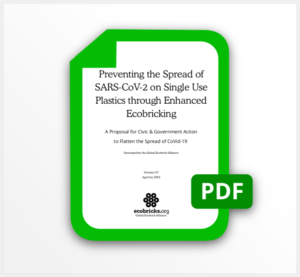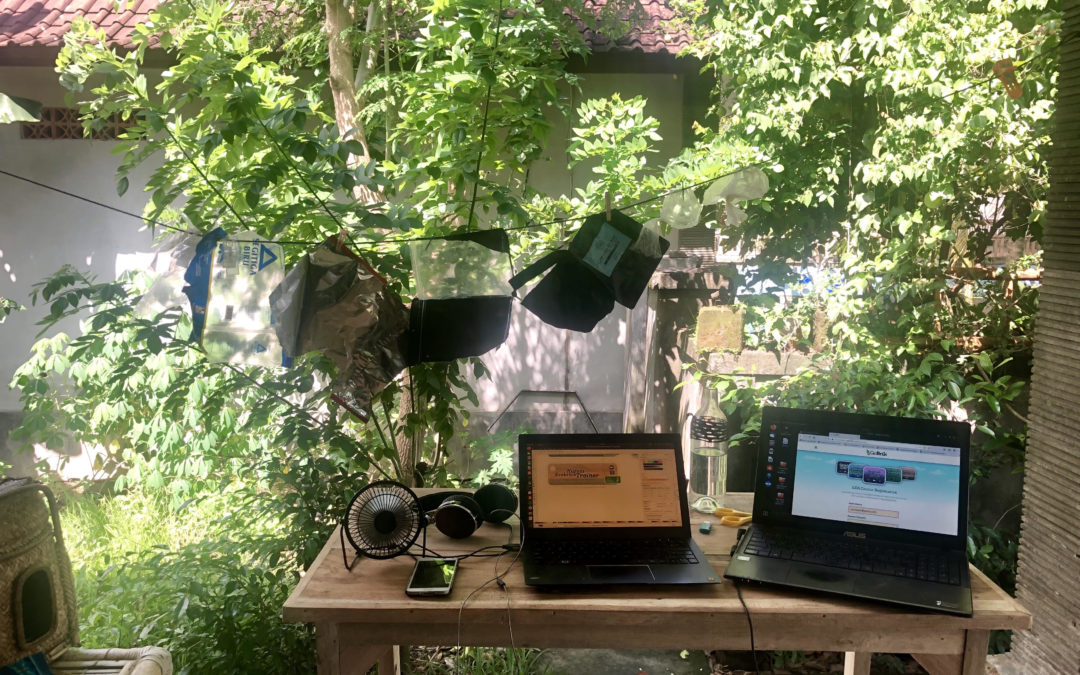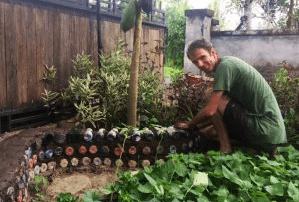Stuck at home, Ani and I have found ourselves consuming more plastic than usual. Its seem that we’re not alone. Understandably, in the face of a pandemic, there are a lot more important things than the problems of plastic, and it seems that globally plastic production and consumption has suddenly jumped up. I couldn’t help but wonder though, what role is plastic playing exactly in these crazy pandemic times? After all, a look at the history of pandemics shows a pattern of waste accumulation compounding already challenging situations.
Breaking research in the US this month indicates that SARS-Cov-2 (the virus that causes CoVid-19 disease) can last for up 72 hours on plastic. In fact, of all the surfaces that the researchers examined, the virus remained viable the longest on polyethylene plastic. One of the main materials for single use plastic. Since ecobricks are all about securing single-use plastic, my team and I sat up and took note. The consequences are more than significant. Since then we’ve been furiously investigating the implications. And figuring out… what to do with the plastic!
This recent US research, which was published in the New England Journal of Medicine echoes an earlier, rather prophetic study in 2015. UK researchers examined a different strain of corona virus, but came to the same conclusions that plastic can harbour and pass on the the virus. The 2015 UK researchers, warn in no uncertain terms, about how the virus can spread on plastic surfaces: ”
“the virus retained infectivity for 5 days on all surfaces… Therefore, natural contamination of common surface material with very few coronavirus particles could represent a considerable risk of infection spread if touched and transferred to facial mucosa.”
All this is pretty relevant for anyone who uses plastic and who is trying to social distance during Covid-19. For some reason though, the media hasn’t made the connection between this study and the plastics that are used for packaging food and other necessities during this period. A big fuss is being made about bringing back plastic bags to help out during this period and Starbucks banning disposable cups. But no one seems to be talking about how single-use plastic is perhaps the most dangerous fomite, given that it moves around from buyer to seller to waste disposal and is intimately handled by humans during consumption.
Although fomite (i.e contaminated surface) transmission is not as significant as virus transmission through the air, over the first few hours that plastic has been contaminated, touching it, then touching ones face, is exactly what the UK researchers in the 2015 research warn could be a dangerous potential method for the virus to spread. And with all the packaged food and goods being bounced from one location to the next, plastic is connects factory workers to restaurant workers to people in their homes to waste management workers.
Now all that said, personally, I really hate it when people refer to ‘research’ and make alarmist claims. It pains me to it in a blog post without footnotes and references. (alas there’s no way to make footnotes here!).

Our white paper in progress! Check it out…
THIS is exactly why, my team and I have been working furiously for the last week to release not only a white paper documenting our research, conjectures and conclusions. From this we base our guidelines on how ecobricking can mitigate the ‘fomite’ (a surface that transmits the virus) risk of plastic. Our white paper draft is 17 pages, with 2 pages of end note references.
It turns out that the process of cleaning and drying ones plastic to prepare it for ecobricking, is exactly what is needed to prevent plastic from becoming a fomite. And in case any contaminated plastic gets in the bottle, it is securely contained and will deactivate in several days (–from a survey of 14 virus survival rates in back in 1991).
We’re getting ready to publicly release our white paper. If anyone with a science background has some free time to take a look at the paper we’ve come up with I’d be much obliged. Or if you’re just interested, I invite you to take a look at the pre-release. I’ll post the link to the latest PDF in the comments below.
Ani and I, in between working on web pages and white papers, are washing and sun drying all the plastic we consume. That’s our clothe-line with plastic from our latest home delivery from our favorite Ubud Raw Chocolate shop. As soon as the plastic comes into our home, we take the food out, cut it open, then wash it right away. We then put it up to dry in the sun. Once dry, we cut it up and ecobrick it. That way the plastic won’t be a burden on the banjar (Balinese neighbourhood) right now– I actually haven’t seen anyone collecting plastic for a while now.
Then… once things return to normal, we can use the ecobrick to expand our garden benches. 🙂


